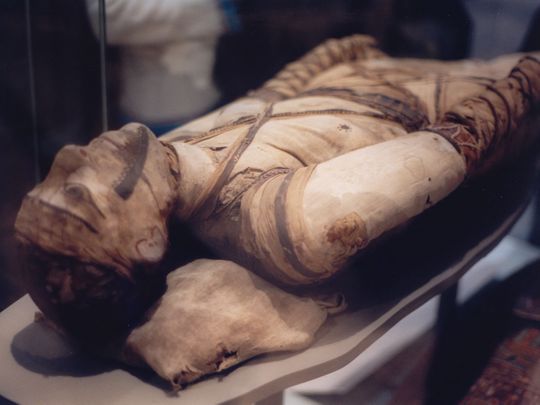
Would you believe me if I told you that people in Europe once ate Egyptian mummies… all because of a mistranslation in a text?
Click start to play today’s Spell It, where we discover the gory details about how mummified ‘dead’ were treated in medieval Europe.
The macabre practice of consuming parts of ancient mummies began in the 11th century in Europe. And it all began because of one word: mumia. Ironically, mumia had nothing to do with preserved ancient bodies – it was the name of a substance found on a single mountainside in modern-day Iran, where it seeped out from black-rock asphalt. It was named after the local word for wax – ‘mum’ – and gained a reputation for being an effective substance for medical purposes. It was pricey, precious and popular.
But when Europeans began translating medical texts from the Islamic world, they made a crucial error. According to a May 2023 report in the National Geographic, a number of 11th and 12th century translators wrongly identified mumia as a substance that could be found in preserved bodies in Egypt’s tombs.
The error partially came from the similarities between the word mumia and mummy, and also the fact that some ancient Egyptian mummies were embalmed using asphalt. There was also a false, longstanding belief in western Europe – that certain substances found in human bodies could heal other humans.
It also wasn’t the first time ‘medical cannibalism’ occurred in Europe. According to a June 2003 study in the UK-based Journal of the History of the Neurosciences, gladiators’ blood was thought to be able to heal epilepsy. Human fat was also used in homemade remedies to treat sprains, broken bones, arthritis and rheumatism, among other maladies.
So, the jump to mummies as a new source of healing wasn’t as far-fetched as we might think. Mumia became the cure-all drug – it was prescribed for everything, from headaches to heart attacks. Suddenly, the demand for mummies exploded, and Egyptian tombs were ransacked for something other than jewellery and pottery. As demand skyrocketed, fake mummies began being sold in the market; bodysnatchers turned in fresh cadavers of executed criminals as mummies to capitalise on the hype.
Egyptomania was so prevalent in the Victorian era in Europe that mummy unwrapping events became a pastime for educators, doctors and private collectors. It was a talking point and a point of pride to procure and unveil an ancient mummy looted from Egyptian tombs.
It wasn’t until the late 19th century that the use of mumia finally petered out.
What do you think of this gory trend? Play today’s Spell It and tell us at games@gulfnews.com.



